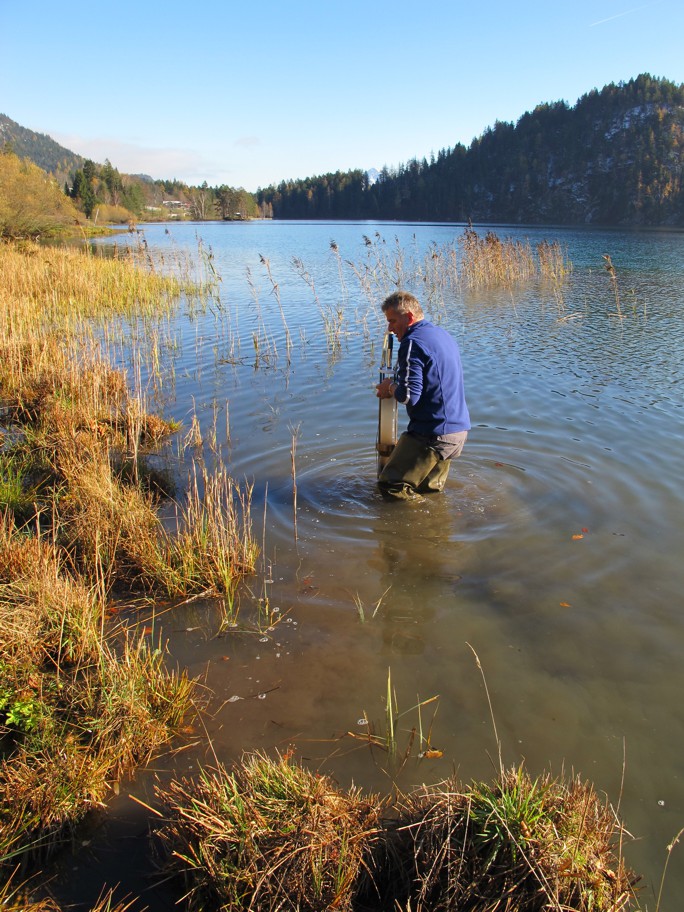stagnant waters
NAVIGATION
STAGNANT WATERS
Profile measuring
One focus in the investigation of standing waters is the measurement of vertical profiles with multi-parameter sensors. The company also offers the collection of water and plankton samples as well as the collection and analysis of benthic invertebrate samples.
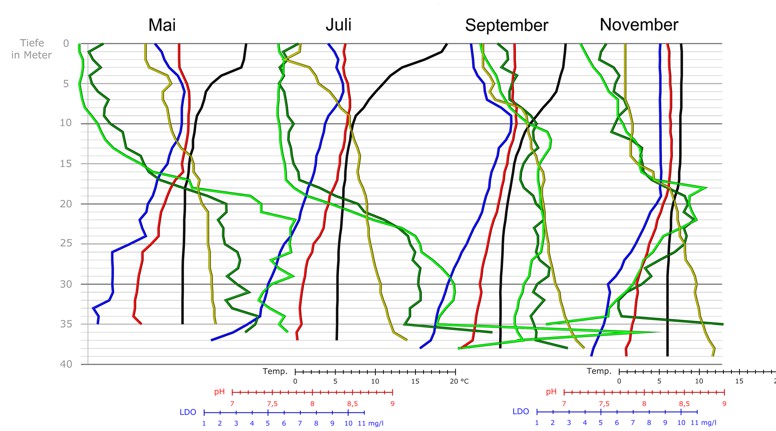
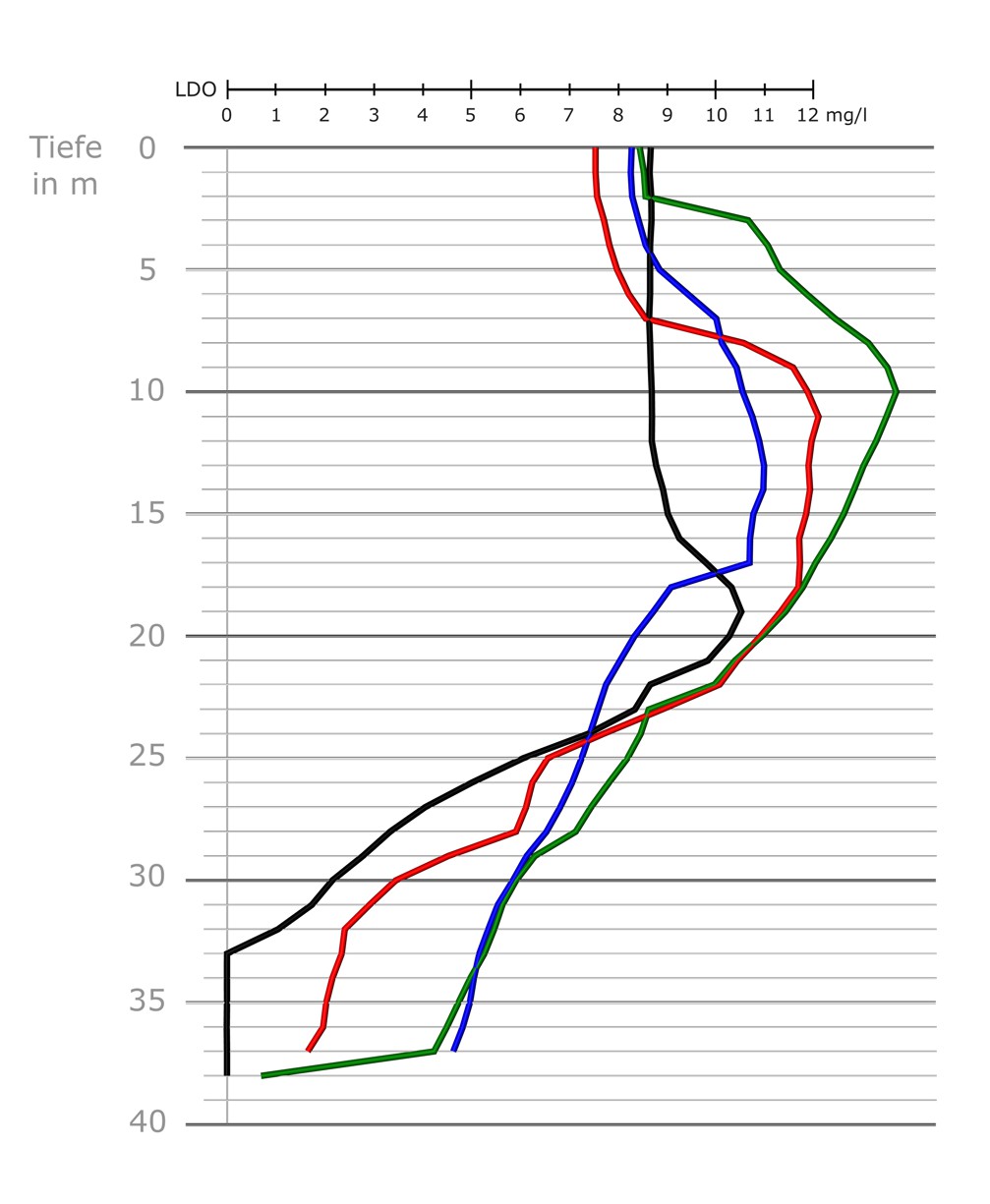
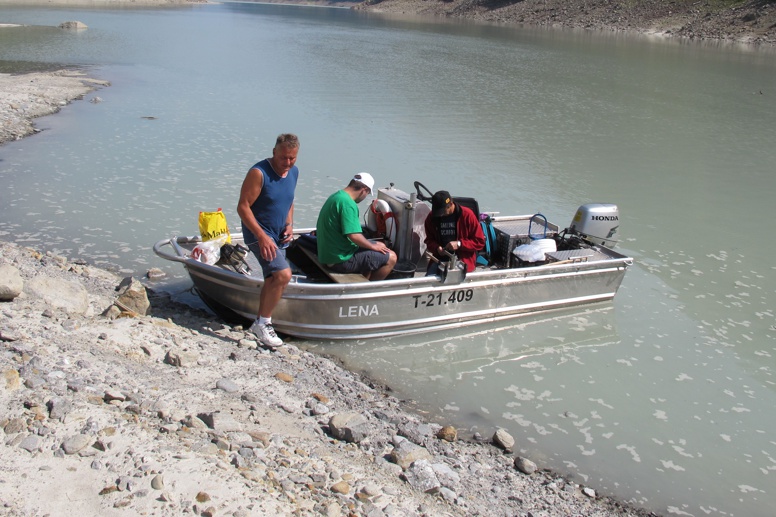
graphical presentation
The graphical representation is usually in the form of 3D models. This method is more complex, but increases the flexibility in the presentation of the results and offers many options for comparing the collected environmental data.
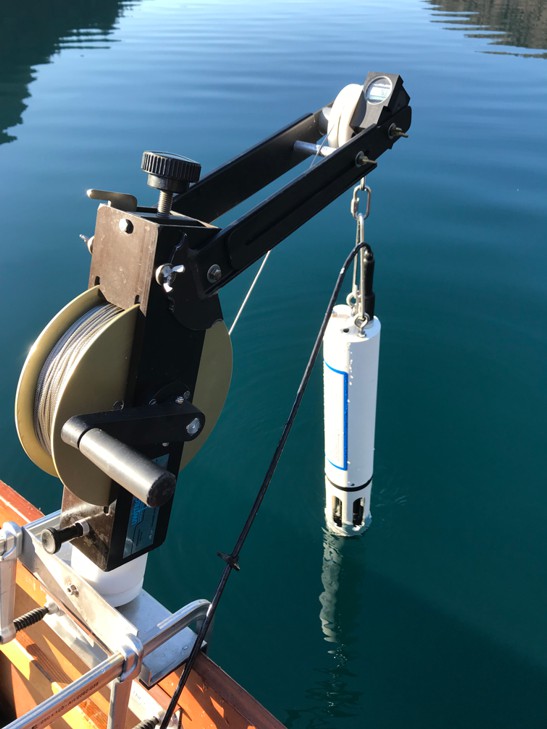
Multiparameter Sondes
The measurements are carried out using two sondes, each equipped with different sensors (as shown in the right-hand image). The devices are operated from the boat via a computer to which they are connected with a data cable. The measurements are usually taken at 1-meter intervals to a maximum depth of 200 meters. A regular profile measure-ment and a control measurement are carried out in each case.
If required, the water quality sondes can also be stationarily exposed in the water as part of long-term monitoring.
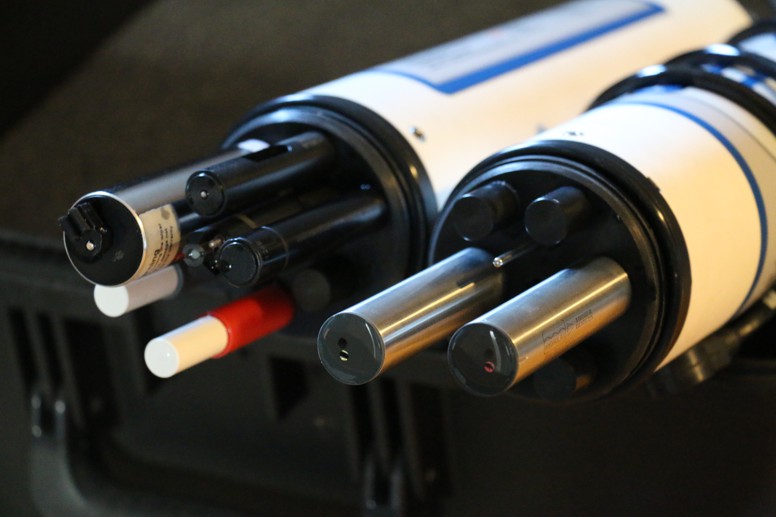
Measuring parameters
Standard-Measuring (max. 200 m): depth, temperatur, pH, conductivity, salinity, desolved oxygen, saturation, redox potential, turbidity, chlorophyll-a, Cyanobacteria. Additional para-meters (max. 25 m): Chloride, Nitrate, Ammonium, irradiance.
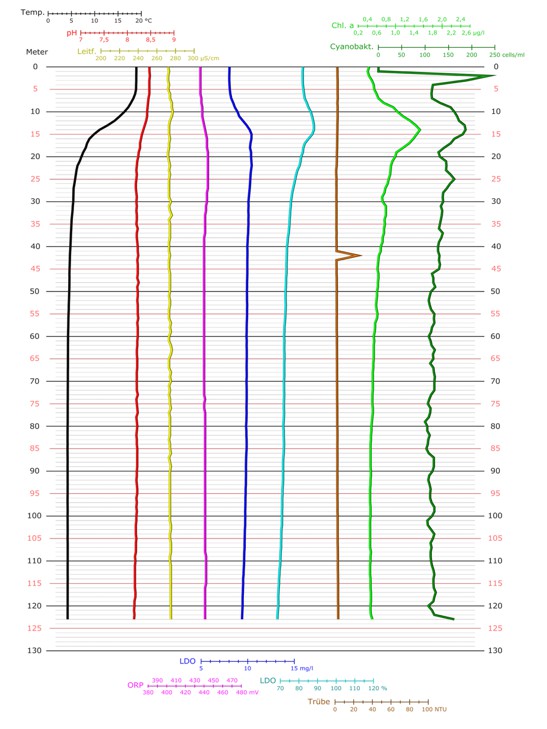
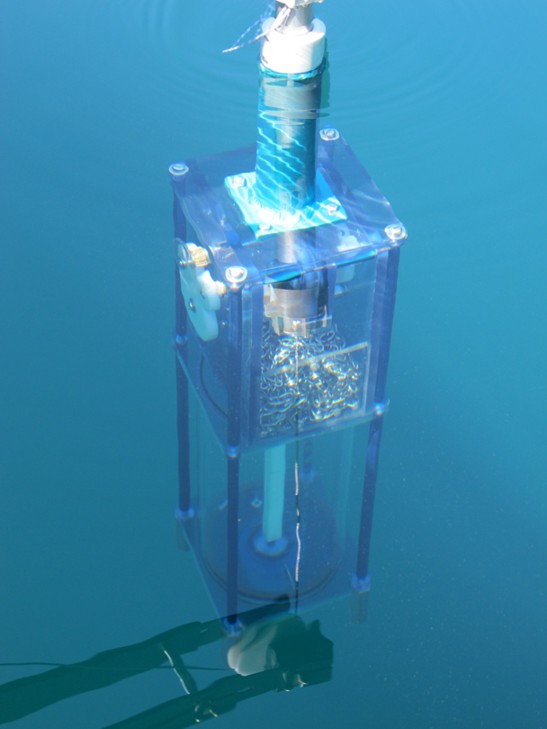
Water samples
Various sampling devices are available for taking water samples from different depths, such as a Schindler or totalizing sampler (image left). The latter is suitable for taking bulk samples from a water column of either 10 or 20 meters.
External offices are commissioned with the chemical analysis of the water samples.
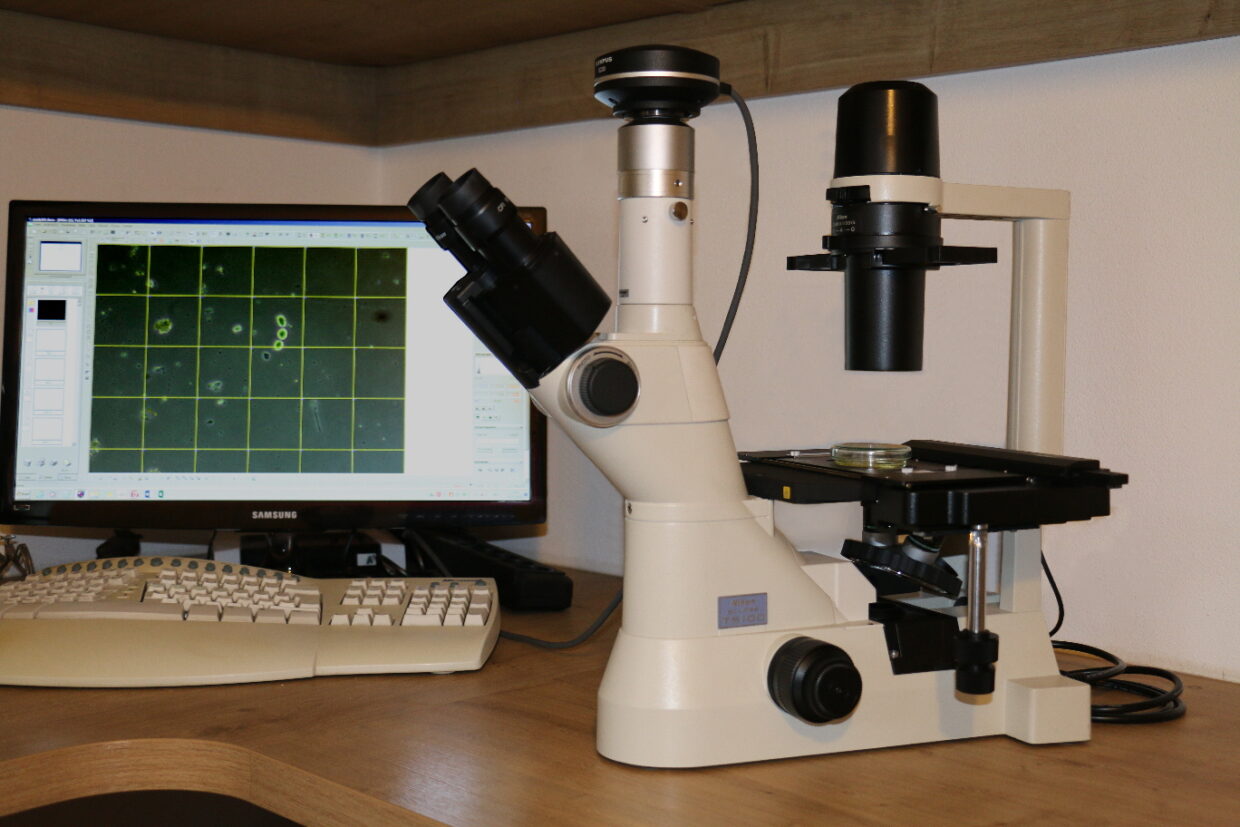
Picture above: Evaluation of the concentration of particles or cells using digital image analysis
Plancton samples
Phytoplankton and zooplankton are sampled using plankton nets or by taking water samples with the Schindler sampler or the summarizing sampler from greater water depths.
The quantitative evaluation of the samples is supported by electronic image analysis. Fine taxonomic processing is carried out in cooperation with external specialists.
Benthic communities
Benthos samples are taken from greater depths with the corer, samples of epiphytic organisms, depending on accessibility, with the Downing sampler. The sediment and plant samples are prepared in the company’s own laboratory, as is the fine taxonomic processing.
Among other things, the company is specialized in the determination of benthic and epiphytic chironomid larvae as one of the most common and species-rich MZB groups in the sediment and phytal of stagnant waters.

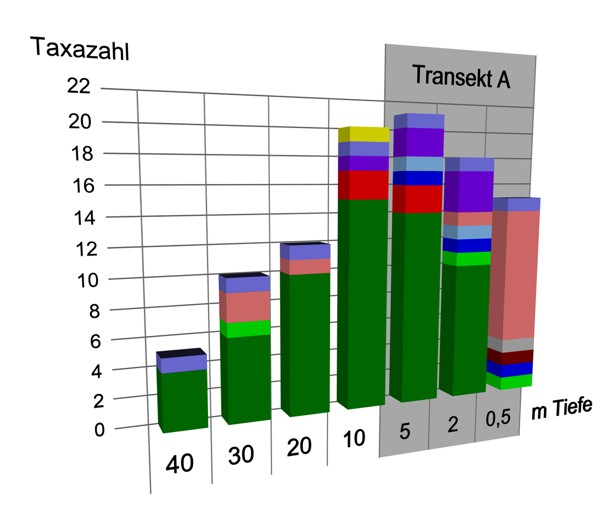
Evaluation
The results of the benthic investigations can also be optimally displayed with the help of 3D models, as shown in the figure above.
